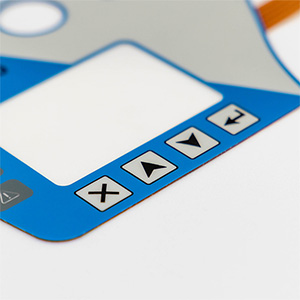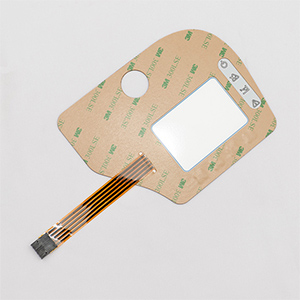
Membrane switches are widely used in electronic devices due to their versatility, durability, and cost-effectiveness. However, over time, these switches can accumulate dirt, grime, and other contaminants that can affect their performance. Regular cleaning of a membrane switch can help extend its lifespan and ensure optimal functioning. In this article, we will discuss the proper steps to clean a membrane switch.

Before we delve into the cleaning process, it is essential to understand what a membrane switch is and how it works. A membrane switch is a thin, flexible circuit that uses pressure-sensitive conductive ink to register a keystroke. It is composed of multiple layers of polyester or polycarbonate films that are bonded together using adhesive technology.
To clean a membrane switch, you will need the following materials:
1. Isopropyl alcohol or electrical contact cleaner
2. Cotton swabs or soft bristle brush
3. Microfiber cloth or lint-free cloth
4. Distilled water
5. Step-by-Step Guide to Clean a Membrane Switch
Follow these simple steps to clean a membrane switch:
Step 1: Turn off the Device
Before you begin cleaning the membrane switch, turn off the device and unplug it from the power source to avoid any electrical shock or damage.
Step 2: Remove any Debris
Remove any visible debris, dust, or loose particles from the surface of the membrane switch using a soft-bristle brush or a dry cotton swab. Be gentle and avoid using excessive force, as this may damage the switch.
Step 3: Apply Isopropyl Alcohol or Electrical Contact Cleaner
Apply a small amount of isopropyl alcohol or electrical contact cleaner onto a cotton swab or a soft-bristle brush. Ensure that the swab or brush is damp and not soaking wet.
Step 4: Gently Clean the Switch
Using the damp cotton swab or soft-bristle brush, gently clean the surface of the membrane switch in a circular motion. Pay attention to the edges and corners of the switch. Do not apply too much pressure as this can damage the switch.
Step 5: Wipe with a Microfiber or Lint-free Cloth
After cleaning, use a microfiber or lint-free cloth to wipe the surface of the membrane switch gently. Ensure that the cloth is not wet or damp as this can cause damage to the switch.
Step 6: Dry the Membrane Switch
Allow the membrane switch to air-dry for a few minutes. Alternatively, you can use a hairdryer on the cool setting to dry the switch quickly.
Step 7: Test the Switch
Once the switch is dry, plug the device back in and turn it on to test if the membrane switch is working correctly.
Tips for Cleaning a Membrane Switch
l Do not use abrasive materials such as steel wool or scouring pads to clean the switch, as these can cause scratches or damage to the switch.
l Use distilled water to clean the membrane switch if isopropyl alcohol or electrical contact cleaner is not available.
l If the membrane switch is still not working correctly after cleaning, it may need to be replaced.

Cleaning a membrane switch is a straightforward process that can help ensure optimal functioning and longevity. By following the steps outlined in this article, you can clean your membrane switch safely and efficiently, and extend its lifespan.
How often should I clean my membrane switch?
Ans: It is recommended to clean your membrane switch every three to six months, depending on usage.
Can I use soap and water to clean a membrane switch?
No, it is not recommended to use soap and water to clean a membrane switch as it can damage the switch's circuitry.
Can I clean a membrane switch without turning off the device?
Ans: No, it is essential to turn off the device and unplug it from the power source before cleaning the membrane switch to avoid any electrical shock or damage.
What should I do if the membrane switch is still not working correctly after cleaning?
Ans: If the membrane switch is still not functioning correctly after cleaning, it may need to be replaced.
Can I use compressed air to clean a membrane switch?
Ans: It is not recommended to use compressed air to clean a membrane switch as it can force dirt or debris deeper into the switch and cause damage.
In conclusion, cleaning a membrane switch is a simple and easy process that can help ensure its optimal performance and longevity. By following the steps and tips outlined in this article, you can safely and efficiently clean your membrane switch and maintain its functionality for years to come. Remember to use the appropriate materials and techniques and avoid using harsh or abrasive materials that can damage the switch.